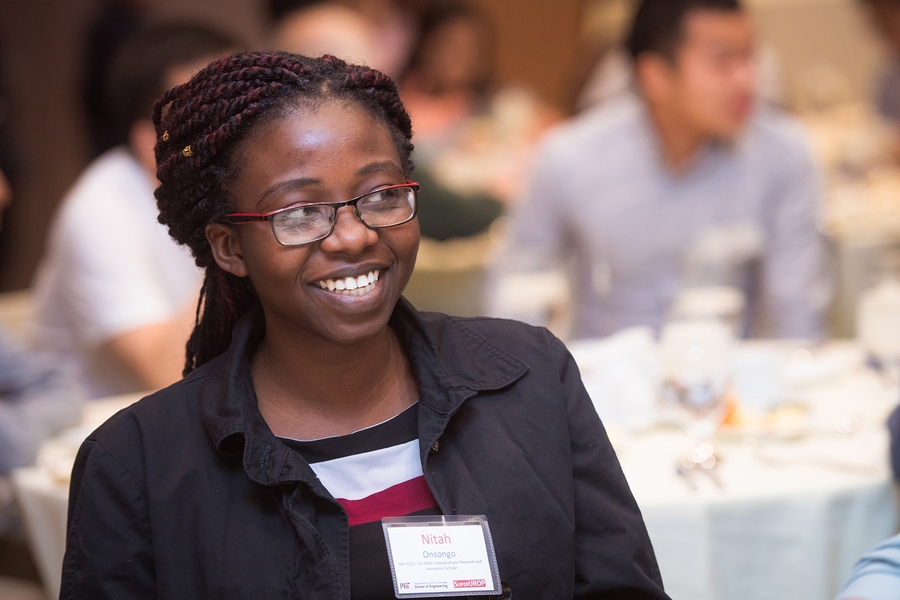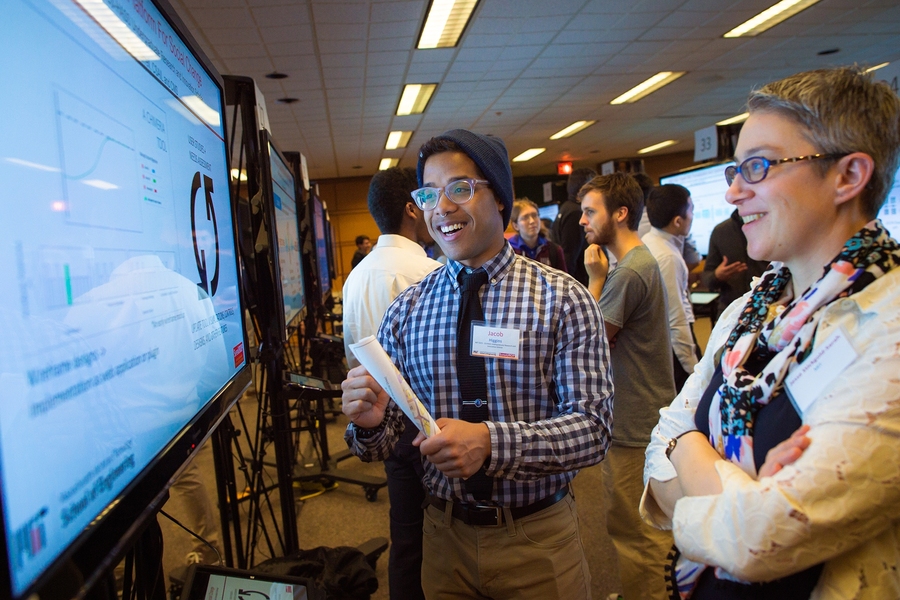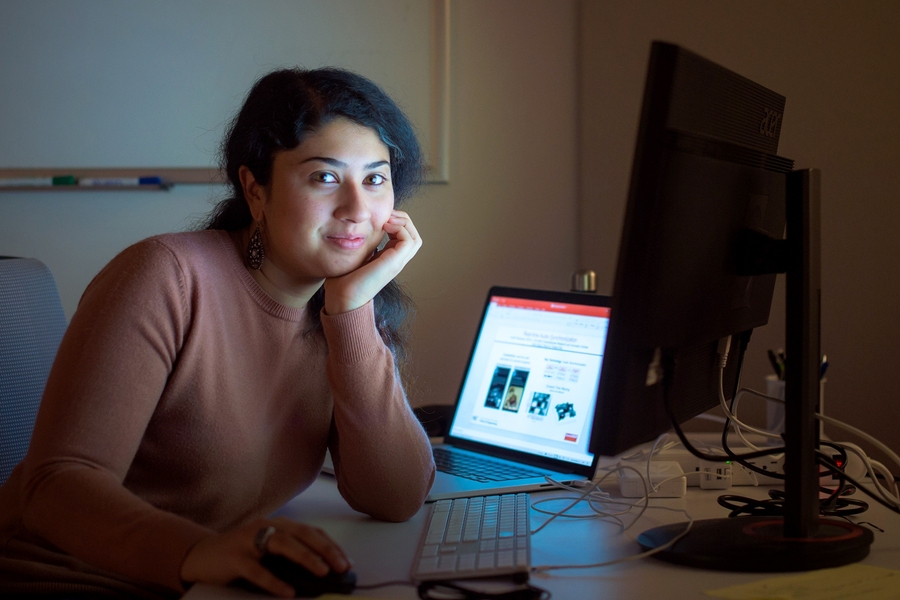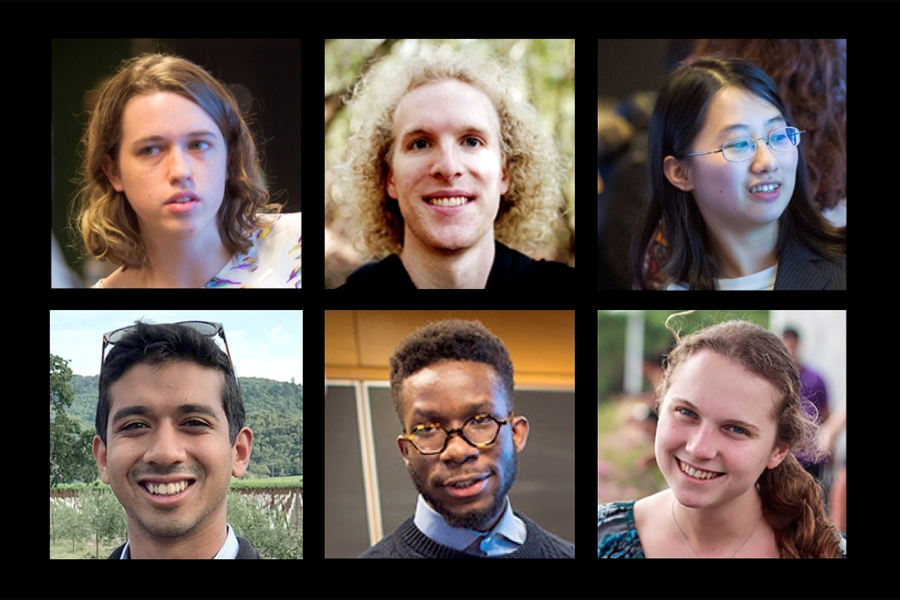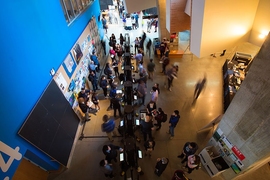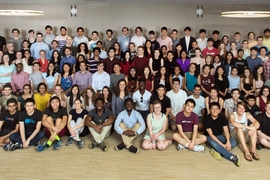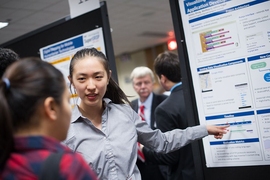Trade policy, government transparency, and music composition systems were among the humanities, arts, and social science (HASS) research areas explored this year by students in MIT’s Advanced Undergraduate Research Opportunities Program, better known as the SuperUROP.
These and similar HASS-related research projects materialized because the SuperUROP — which launched in 2012 in the Department of Electrical Engineering and Computer Science (EECS) — was extended to support research projects in MIT's School of Humanities, Arts, and Social Sciences. Thanks to a generous grant from an anonymous donor, nine students participated in the yearlong program as CS+HASS Undergraduate Research and Innovation Scholars.
“The cool thing about CS+HASS is that a lot of computer science is not yet applied to the social science and humanities fields,” says Samir Dutta, a junior in computer science with a minor in economics. “You are combining two fields that haven’t been combined that much in the past, so it’s a great opportunity to find new things. You’re pioneering a new type of analysis.”
Pioneering students
Dutta’s SuperUROP project involved applying machine learning and big data analysis to a dataset of more than 10 billion tariff rate observations with the goal of better understanding the economic and political determinants of tariffs. “His research advances our understanding of the interaction between political institutions and product-level polices,” says In Song Kim, an assistant professor of political science and one of Samir’s SuperUROP advisors.
Mikayla Murphy, a senior in civil and environmental engineering who is minoring in computer science, says that using computer science to advance political science research “felt different” from anything she had done before. For her SuperUROP, Murphy worked on a MIT GOV/LAB’s project examining local U.S. government websites and rating them for transparency. Her task was to automate the data analysis system to produce useful fact sheets for government officials and the public.
“Being able to do this cross-disciplinary project applying CS to political science has definitely been very interesting,” she says. “I had seen how science labs operate, but in a political science lab it’s different. Seeing how my advisor [F. Daniel Hidalgo, the Cecil and Ida Green Associate Professor of Political Science] approaches problems and wants to release all this information to the public — which is not always the goal of scientific research — has been cool.”
A deep dive for undergraduates
The SuperUROP program consists of a two-semester course, 6.UAR (Seminar in Undergraduate Advanced Research), and at least 10 hours a week in the lab — making it a deep dive into research that is a new experience for many undergraduates.
“This is my first super-real-serious research endeavor, so it’s been a crazy learning experience,” says Jacob Higgins, a junior in comparative media studies who did his SuperUROP with Professor D. Fox Harrell, who has appointments in both Comparative Media Studies and the Computer Science and Artificial Intelligence Laboratory. “Being able to interact with people much further along on their journey as researchers is so valuable to me just starting out.”
For his project, Higgins worked on a tool for applications such as Chimeria Grayscale, a video game intended to spark reflection on topics like sexism in the workplace. The tool is designed to automate the work of developers by ensuring interactive narratives take different paths in response to user inputs.
“It’s a lot of human-computer interaction,” Higgins says, noting that the work called for a truly interdisciplinary skillset. “I did a lot of coding and computational thinking, including applying the fundamentals of software construction I learned in 6.031 to implement the tool. And, from the humanities side, the critical analysis I’ve done in Comparative Media Studies prepared me to think of stakeholders and evaluate tools using metrics that are correct for this kind of interdisciplinary, human-computer interaction field.”
The first nine CS+HASS SuperUROP research projects are: "Does Democracy Cause Free Trade?" by Emma Bingham; "Eye-Tracking Experiment on Reading Patterns of Non-Natives" by Run Chen; "Spectacles: Assisting Speculative Analysis in Active Archives" by Peter Downs; "Linking the Political and Economic Determinants of International Trade with Tariff Rate Data" by Samir Dutta; "Dynamic Background Music for Action Adventure Video Games" by Patrick Egbuchlam; "Video Games for Social Issues" by Jacob Higgins; "Digital Governance: Using Big Data to Measure Government Transparency Online" by Mikayla Murphy; "Theatryc: A New Theater-Arts Communication Platform" by Nitah Nyang'ate Onsongo; and "Real-Time Audio Synchronization" by Smriti Pramanick.
